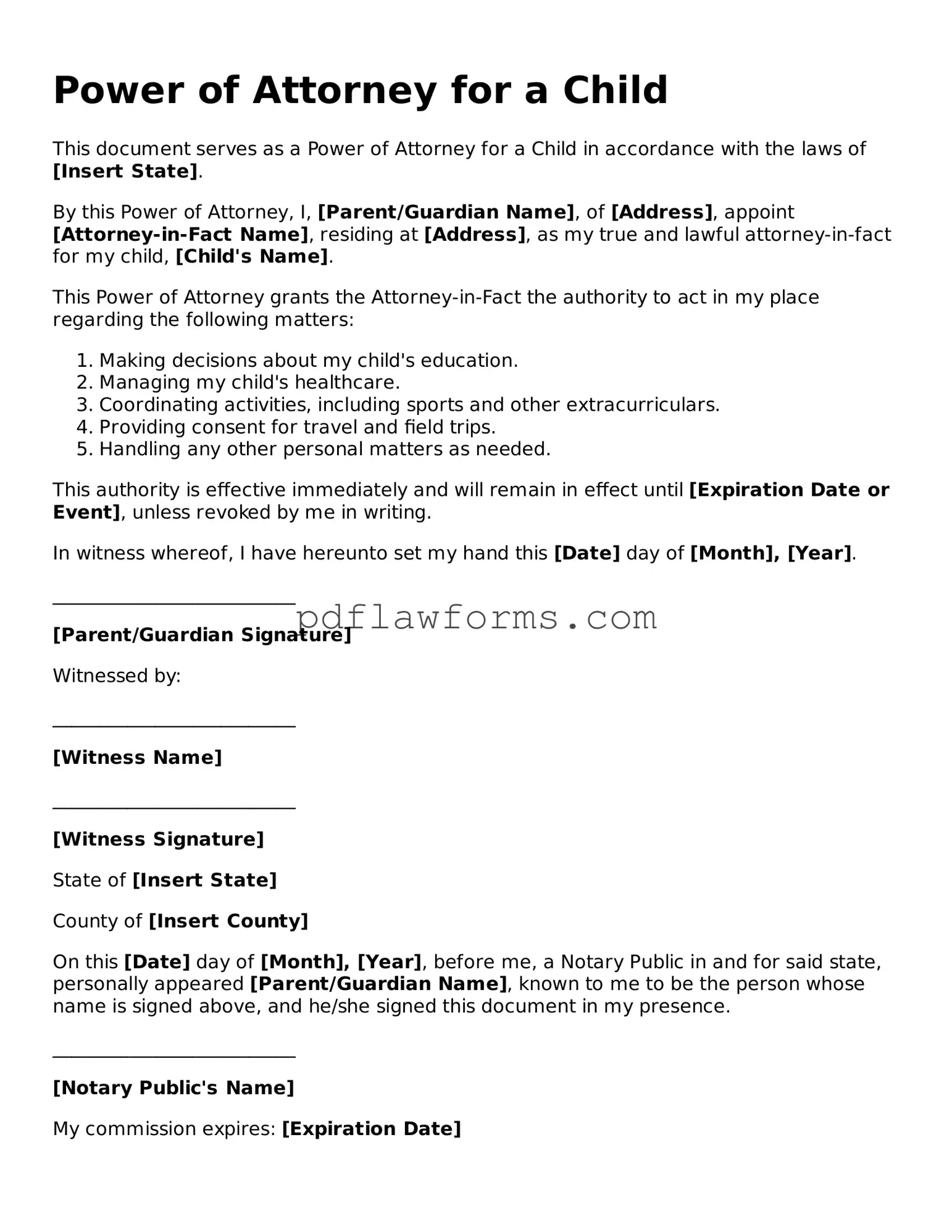Filling out a Power of Attorney for a Child form is an important task that can provide peace of mind for parents and guardians. However, mistakes can happen, and they may lead to complications down the road. One common error is failing to specify the exact powers being granted. It’s essential to clearly outline what the designated agent can and cannot do. Vague language can create confusion and potentially limit the effectiveness of the document.
Another frequent mistake is neglecting to include the full names and addresses of both the parent and the designated agent. Accurate identification is crucial. Without this information, the document may be deemed invalid or unenforceable. Always double-check that all parties are clearly identified to avoid any misunderstandings.
Many people overlook the need for signatures. A Power of Attorney for a Child form must be signed by the parent or guardian granting the authority. In some cases, witnesses or a notary may also be required. Failing to obtain the necessary signatures can render the document ineffective. It’s wise to verify the requirements in your state.
Additionally, some individuals forget to include an expiration date for the Power of Attorney. While some powers may be intended to last indefinitely, others might only be needed for a specific period. Clearly stating an expiration date can help prevent confusion in the future and ensures that the authority does not extend longer than necessary.
Another mistake is not considering the specific needs of the child. The agent should be someone who understands the child’s unique situation and can act in their best interest. Choosing someone without considering their ability to handle the responsibilities can lead to challenges later on.
It’s also common to ignore the importance of keeping a copy of the completed form. Once the Power of Attorney is signed, it should be distributed to all relevant parties, including schools, medical providers, and anyone else who may need to rely on it. Without copies, there could be confusion when the agent attempts to exercise their authority.
Some individuals may forget to review the form for accuracy. Typos or incorrect information can lead to significant issues. Taking the time to carefully review the document before finalizing it can save a lot of trouble later on.
Lastly, failing to update the Power of Attorney when circumstances change is a mistake that can have serious consequences. Life events such as relocation, changes in family dynamics, or shifts in the child’s needs may necessitate an update to the document. Keeping it current ensures that it reflects the most accurate and relevant information.
